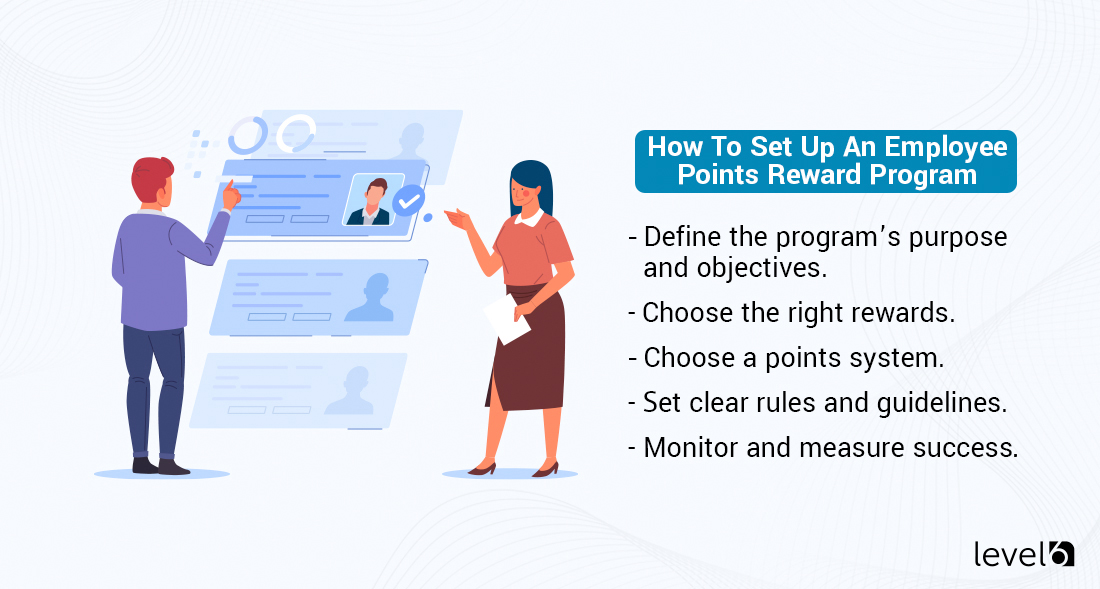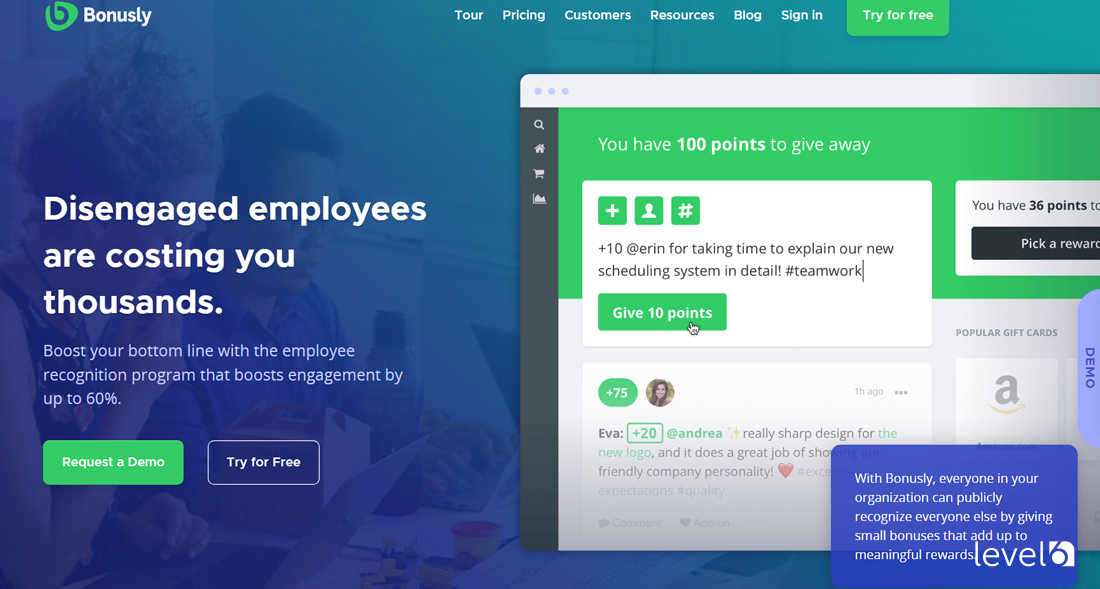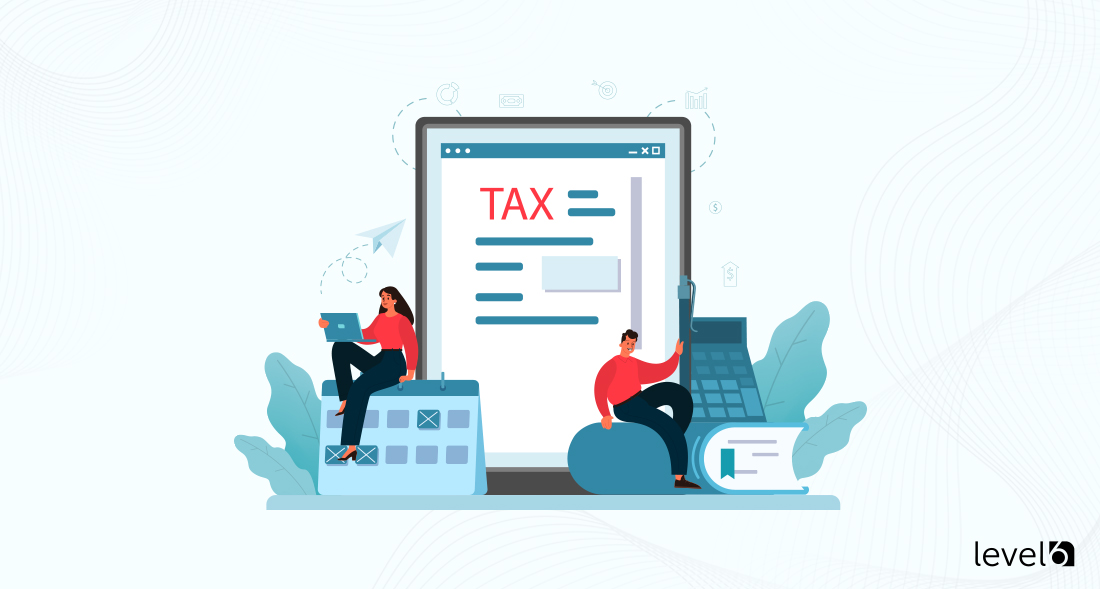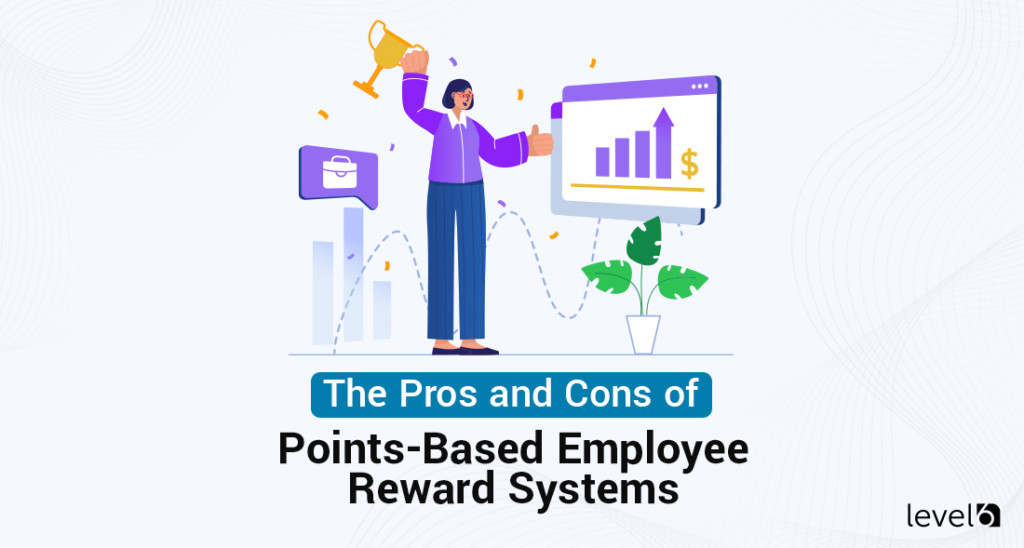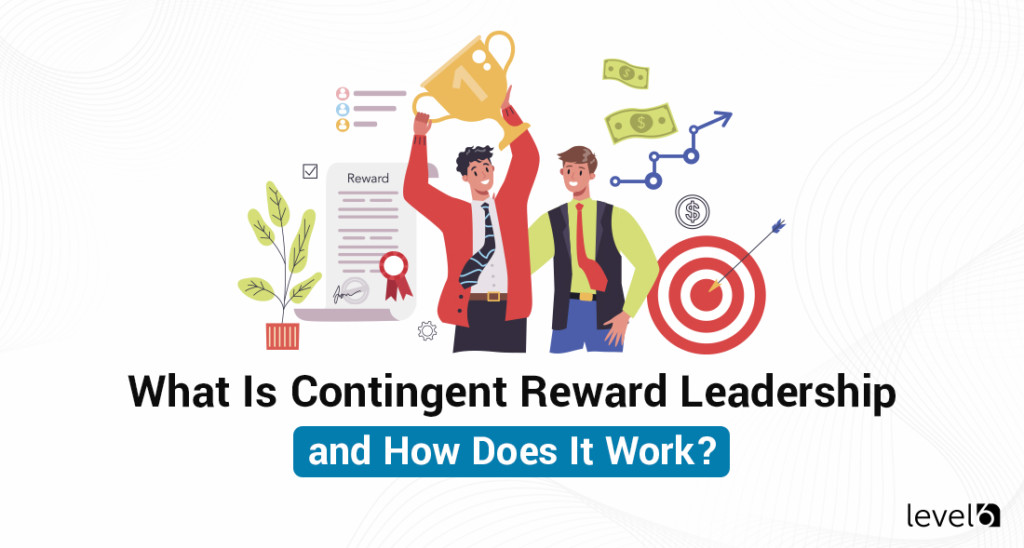An employee points program is a type of reward system that allows employers to show appreciation for their employees’ hard work and contributions by offering them reward points with a monetary value. Employees can redeem these points for various rewards, including merchandise, experiences, and gift cards.
Studies have shown that gift cards are highly preferred by employees, with 44% of respondents in a survey stating that they strongly preferred a gift card as a reward for meeting a goal at work. This is where employee points programs come in handy.
By providing a wide range of rewards, including gift cards, employees can choose a reward that they find valuable and meaningful.
A points-based rewards system can also gamify the reward process, making it more exciting and engaging for employees. Rather than just receiving a cash-based incentive, employees can accumulate points and compete with their colleagues to see who can accumulate the most.
This creates a sense of healthy competition among employees, which can lead to increased motivation and productivity. In addition to boosting morale and productivity, employee points programs come with many benefits, including:
- Increased employee retention rates
- Enhanced employee engagement and motivation
- Reduced absenteeism and turnover rates
- Increased team morale and cohesion
- Higher job satisfaction levels
- Improved performance and productivity
- A cost-effective way to reward employees
Overall, employee points programs offer a unique and exciting way for employers to show their appreciation for their employees’ hard work and contributions. By providing a variety of rewards and creating a sense of healthy competition, employers can create a more engaging and motivating work environment that benefits both the organization and the employee.
Let’s talk about some of the benefits of these programs (for both businesses and employees) and how they work.
The Benefits Of An Employee Points Program
Employee points programs have many benefits for both employers and employees.
First and foremost, a points-based rewards system is a tangible form of acknowledgment that can motivate and recognize employees. In fact, an SHRM study found that employees become more engaged when they are rewarded with flexible rewards such as points. This is because points-based rewards divert employees’ attention away from cash-based incentives and allow them to purchase something meaningful that they would not normally spend their money on.
Looking to learn more about an incentive, rebate
or reward program for your business?
Curious about costs?
Try our instant pricing calculator:
Points-based rewards create a sense of anticipation among employees. Knowing that they are working towards a specific reward can be a great motivator. Additionally, points-based rewards allow employers to recognize and reward employees for achieving certain goals or milestones.
Another benefit of employee points programs is that they can help employers attract and retain top talent. A study by PwC found that 78% of employees would stay with their current employer if they felt their efforts were being recognized.
Points-based rewards can also help differentiate employers from competitors in the job market, especially if the rewards program is unique or offers desirable rewards.
Employee points programs can also benefit the organization by encouraging specific behaviors or outcomes. For example, employers can offer points for completing training or achieving sales targets. This can help ensure that employees are working towards the organization’s goals and objectives.
Types Of Points Programs
There are various types of employee points programs that organizations can use to reward and incentivize their employees. Here are some of the most popular types:
- Performance-based programs: These types of programs reward employees based on their performance and achievements. Employees earn points based on their completion of certain tasks, meeting or exceeding targets, or demonstrating outstanding work.
- Wellness programs: These programs focus on promoting and improving employee wellness, such as encouraging regular exercise or healthy eating habits. Employees can earn points for participating in wellness activities or achieving health-related goals.
- Service recognition programs: These programs reward employees for their loyalty and long-term service to the organization. Employees can earn points for every year or milestone they achieve with the company.
- Employee referral programs: These programs encourage employees to refer qualified candidates to the organization. Employees can earn points for each successful referral, which can be redeemed for rewards.
- Training and development programs: These programs incentivize employees to learn and improve their skills and knowledge. Employees can earn points for attending training sessions, completing courses, or achieving certifications.
Organizations can cater to their employees’ diverse interests and motivations by offering different types of employee points programs. This can increase engagement, boost morale, and improve overall employee performance and satisfaction.
However, choosing the right program type that aligns with the organization’s goals and values is important. For example, a performance-based program may work well for a sales-driven organization, but a wellness program may be more suitable for a healthcare company.
In addition, organizations should regularly review and assess their points programs to ensure that they are effective and aligned with their overall goals. This can include gathering feedback from employees, analyzing program data, and adjusting the program as needed.
Overall, employee points programs can be a powerful tool for organizations to engage and motivate their employees. By understanding how they work and how to set them up, organizations can create a culture of recognition and reward that benefits both the organization and the employee.
How To Set Up An Employee Points Reward Program
Setting up an effective employee points program requires careful planning and execution.
Here are some tips for creating a successful program:
- Define the program’s purpose and objectives: Determine what behaviors or outcomes you want to incentivize, such as meeting sales goals or improving attendance.
- Choose the right rewards: Offer a variety of rewards that are relevant and appealing to your employees. Consider partnering with local businesses to offer discounts on their products or services.
- Choose a points system: There are different ways to assign points to employees. You could award points for completing tasks, meeting targets, or exhibiting specific behaviors. You should also decide on the point value of different activities.
- Set clear rules and guidelines: Make sure your employees understand how the program works, how points are earned, and how rewards can be redeemed.
- Monitor and measure success: Keep track of program participation and the impact on employee engagement and productivity. Use this data to fine-tune the program and make adjustments as needed.
Setting up an employee points program requires a solid plan, investment in a software solution, and ongoing maintenance. But if done well, it can be a powerful tool for driving employee engagement and productivity.
Make Sure Employees Use Their Points
Implementing an employee points program is a great way to boost morale and increase productivity in the workplace, but it’s not enough to simply offer the program and hope for the best. You must ensure that your employees use their points to reap the benefits.
Here are a few tips for making sure your employees use their points:
- Make the program easy to use: The more user-friendly the program is, the more likely your employees are to participate. Consider creating a mobile app or online portal where employees can easily access their points and see what rewards are available.
- Offer attractive rewards: It’s important to offer rewards that your employees actually want. Survey your employees to find out what types of rewards they would be interested in and use that information to curate a list of attractive options.
- Communicate regularly: Keep your employees in the loop about the program by sending out regular updates and reminders. You can do this through email, company newsletters, or even by displaying the program’s progress on a company bulletin board.
- Recognize top performers: By publicly recognizing employees who are actively using their points and redeeming rewards, you can create a culture of competition and encourage others to do the same.
- Integrate with performance metrics: Consider linking your employee points program with performance metrics like sales goals or attendance records. This can motivate employees to strive for better performance and earn more points in the process.
Remember, the key to success with an employee points program is to make it fun and engaging for your employees. With a little effort and creativity, you can create a program that your employees will be excited to participate in and will help improve your overall workplace culture.
Best Software For Employee Points Programs
Implementing an employee points program can be a great way to reward and motivate employees, but managing such a program can be difficult without the right tools. Fortunately, many software options are available to help organizations set up and manage employee points programs.
The best software for employee points programs will offer features that make the program easy to use and customize. It should also be scalable, meaning it can accommodate growth and changes within the organization.
One popular software option is Bonusly, which offers a user-friendly interface and allows for custom point values and rewards. The software also integrates with popular workplace communication tools like Slack and Microsoft Teams, making it easy for employees to redeem their points.
Another great software option is Fond, which offers a wide range of reward options, including gift cards and charitable donations. The platform also offers tools for managers to track employee engagement and measure the success of the program.
Using software for employee points programs offers many benefits beyond just making it easier to manage. Employees can access rewards and track progress, increasing engagement and motivation. Managers can also use the data provided by the software to make informed decisions and adjust the program as needed.
Several successful organizations have implemented employee points programs using software. For example, global retailer Zara uses Bonusly to reward employees for going above and beyond their job responsibilities. This has resulted in increased engagement and productivity within the organization.
When setting up an employee points program, consider using software to make it easier to manage and track progress. Look for features that make it customizable and scalable, and take advantage of these platforms’ benefits to maximize employee engagement and productivity.
Costs And Budget Concerns
Before implementing an employee points program, it’s important to consider the costs and budget concerns. Employee points programs can vary in cost depending on the type of program, the rewards offered, and the number of employees participating. However, the benefits of these programs typically outweigh the costs in terms of increased productivity, job satisfaction, and employee retention.
One cost to consider is the cost of the rewards. Employers may offer physical items like gift cards, merchandise, or experiences like trips or concerts, depending on the program. Employers can negotiate with vendors to receive discounts on these rewards or opt for virtual rewards like digital gift cards or extra vacation days, which can be less expensive.
Another cost to consider is the software or platform used to run the program. Various software options are available, ranging from basic point-tracking systems to more advanced programs offering detailed reporting and analysis. Employers should choose software that fits their budget and their specific needs.
Additionally, employers should consider the cost of implementing the program, including time spent training employees on the program, marketing the program to employees, and any administrative costs associated with managing the program.
To help offset the costs of an employee points program, some employers may choose to limit the number of rewards available or offer rewards at a higher point value. Employers can also incentivize employees to earn more points by offering bonus points for specific actions or behaviors, like meeting certain performance goals.
Overall, while employee points programs come with costs and budget concerns, the benefits typically outweigh these costs. Employers can find creative ways to offset the costs and design a program that fits their budget while still motivating and rewarding their employees.
Tax Implications
While employee points programs are an effective way to boost employee engagement, it’s important to be aware of the potential tax implications of these programs. Depending on how the points program is structured, the value of the points earned by employees may be taxable.
If the points are considered taxable income, they must be included in the employee’s gross income and subject to federal, state, and local income tax withholding. Additionally, employers may be required to pay their share of Social Security and Medicare taxes on the value of the points earned by their employees.
Employers may want to structure their points program as a non-cash award to avoid tax implications. This can be done by ensuring that employees have no choice in the awards they receive, the points are non-transferrable, and the points cannot be redeemed for cash. If these conditions are met, the value of the points earned by employees may be excluded from their taxable income.
It’s important to consult with a tax professional to determine the best way to structure an employee points program and understand any potential tax implications. This can help employers avoid any potential legal issues and ensure that their employees are able to fully enjoy the benefits of the program without any additional financial burdens.
At Level 6, we offer several proven tools for employee points programs, including reloadable debit cards, curated merchandise, and bespoke travel experiences. Schedule a call with us today to tell us more about your needs, and let us show you our capabilities!

Claudine is the Chief Relationship Officer at Level 6. She holds a master’s degree in industrial/organizational psychology. Her experience includes working as a certified conflict mediator for the United States Postal Service, a human performance analyst for Accenture, an Academic Dean, and a College Director. She is currently an adjunct Professor of Psychology at Southern New Hampshire University. With over 20 years of experience, she joined Level 6 to guide clients seeking effective ways to change behavior and, ultimately, their bottom line.
 Demo
Demo

